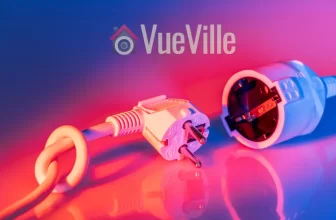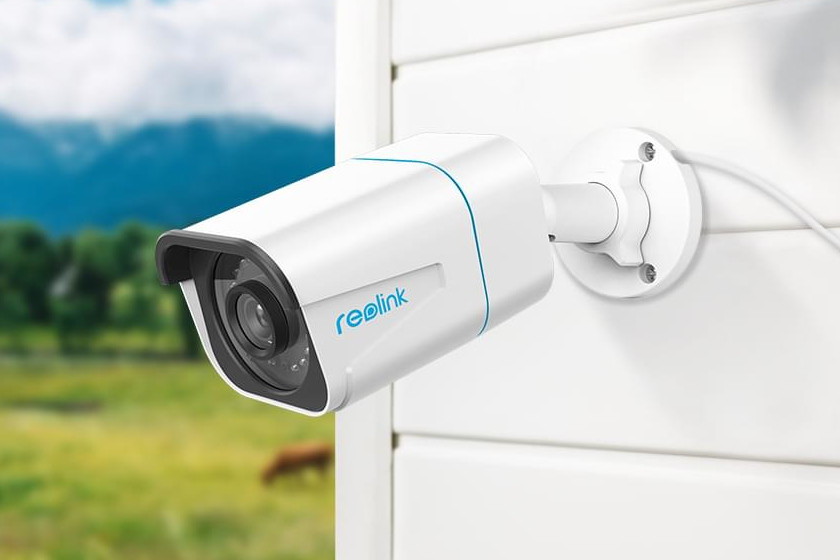So the one thing you thought would work 24/7 with absolutely zero down-time has just decided it can’t be bothered.
Before you chuck your seemingly malfunctioning IP camera out of the window, here are a few things you may want to check first. Because you know the VueVille family is frugal and nothing goes into the trash unless its well and truly beyond recovery!

Why does my IP camera keep going offline/disconnecting?
So the most obvious reason may just be that the poor thing’s time is up. A lot of electronic devices don’t just die one fine day; rather they die a slow painful death, dragging it out and adding to your frustration. A great example is wireless routers. Some IP cameras are just like that. But before jumping to this conclusion, here are a few things to check.
Check the strength of your camera’s wireless connection
If your IP camera is wireless, it is probably too far away from your Wi-Fi router. There are a few things you can do to improve the Wi-Fi connectivity of your camera. If at all possible, move the camera closer to the router or move the router closer to the camera. If this is not an option, make sure your camera is using the 2.4 GHz network, which has better range.
If this fixes the connection problems, you need to improve the strength of the Wi-Fi at your camera’s loaciton. You can achieve this by using a Wi-Fi extender like this TP-Link model or investigate mesh Wi-Fi options such as Google Wi-Fi.Still no joy? If the camera has an Ethernet port (RJ-45), temporarily plug it directly into your router using a LAN cable. If this fixes the connection problems, your camera’s Wi-Fi is dying. Yes this can happen! It’s happened to one of my older wireless IP cameras, but the wired LAN connection still works.
How fast is your home broadband’s upload speed?
If you are viewing your IP cameras remotely, two things are key – the upload speed of your home broadband and the download speed of your viewing device. Most home broadband connections are not symmetric – they have good download speeds but low upload speeds. When your camera is streaming you live-view video, its mostly using the upload your home broadband connection’s upload bandwidth.

Is your camera on the latest firmware?
Most of us are lazy when it comes to keeping our devices updated with the latest firmware. This is especially true for devices like IP cameras that are pretty much set and forget. After installing my first Hikvision IP camera, I didn’t touch it for over 2 years. And even then, I had to access it because I wanted to re-orient it. So make sure you upgrade the firmware to the latest available version, and see if the performance issues abate.
Are your Ethernet cables damaged?
If you are using Power over Ethernet to power your IP camera, try replacing your Ethernet cable. This is especially relevant if you use buried Ethernet cable. Bends or kinks in the cable can damage the copper wiring inside. If this is the issue, make sure you replace the cable with burial grade Ethernet cables
Check your networking equipment
How good is your router and other networking gear that you use in your home network? The most obvious culprits are your Wi-Fi router, network switches, and PoE switches. Remove each such equipment from the path between your IP camera and the Wi-Fi router to identify any faulty products.
Is the IP camera’s power source working properly?
If you are not using PoE, this is an often overlooked factor. Most IP cameras work at 12V and so the power supply used is a step down transformer. Cheaper power supply transformers probably won’t last more than a few years and may need replacement.
Did any of the above tips work for you? Or how did you confirm your IP camera has well and truly kicked the bucket? Let us know in the comments below!
So what if none of the above tips worked? Well, I am sorry to say that’s probably the end of the line for your IP camera. An IP camera that works intermittently is like a door lock that works only half the time. Useless. Time to hit up our recommended indoor or outdoor IP cameras list then!






I have 3 cameras. I I electrically connected them the same. I’m having issues losing internet to one at around 7 pm daily. I ran an Ethernet cable to it from the modem, but the problem persists. My bandwidth is normally around 60 Mbps. No idea on how to maintain the connection.
Its difficult to say what the problem is without knowing the exact setup of the problematic camera and your network. What camera is it? Then we can find a way to check the logs (if the camera supports error logging). Also are you sure you have not set it to auto reboot at a particular time and then forgotten about it? I have done similar things 😉
I have two wanscam w2 ip cameras and have used them for two years. Router firmware is up to date. Windows up to date. My desktop was connected by Ethernet wire to the router. On two different computers -win7 through win11 I had periodic disconnects. About every 5 minutes at its worst, no specific time.
Anyway, today I disconnected the Ethernet hookup and turned on the win11 desktop. Checking the log it has had no disconnects in 10 hours! I cannot figure why the method using an Ethernet connection causes the disconnects. The cord/wire is fine.
Any ideas? Thanks in advance
Have you checked your router logs for any clues? It may be DHCP/DNS issues that are causing the disconnects.
How do you check the logs?
My Iphone will give me notifications of movement but will not connect. It was connecting but all of a sudden it just stopped.